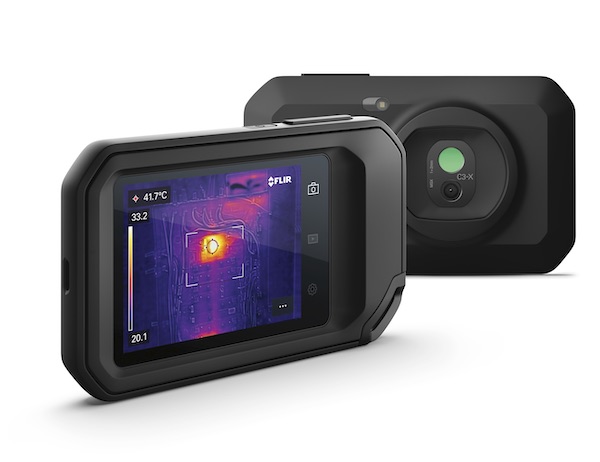Rugged monitors are essential tools for industries that require durable and reliable display solutions in harsh environments. From military applications to industrial settings, these monitors are built to withstand extreme temperatures, vibrations, dust, and moisture. Manufacturing such robust devices involves a meticulous process, often with key components sourced from global suppliers, including those based in China. As a major hub for electronics manufacturing, China plays a crucial role in the production of rugged monitors, making it a common destination for companies seeking to optimize their supply chains. This article explores how rugged monitors are manufactured, the role of Chinese components in this process, and essential tips for business trips to China, including the importance of using a VPN.

How Rugged Monitors Are Manufactured
The production of rugged monitors is a complex process that involves several stages, from design and material selection to assembly and rigorous testing. Each step is carefully executed to ensure that the final product meets the stringent requirements necessary for operation in challenging environments.
Key Stages in the Manufacturing Process
- Design and Prototyping: The process begins with the design phase, where engineers create detailed specifications for the rugged monitor. This includes selecting materials that can withstand extreme conditions, such as reinforced glass for screens and durable metal or plastic for enclosures. Prototypes are then developed to test the design’s feasibility and performance.
- Component Sourcing: Once the design is finalized, the next step is sourcing the necessary components. This includes high-quality displays, protective casings, circuit boards, and input/output interfaces. Many of these components are sourced from specialized suppliers, with a significant number coming from China, known for its advanced electronics manufacturing capabilities.
- Assembly: During the assembly phase, the sourced components are brought together to create the rugged monitor. This involves precision engineering to ensure that each part fits together perfectly, providing the necessary protection against external elements. Automated machinery and skilled technicians work together to assemble the monitors to the exact specifications required.
- Testing and Quality Control: Rugged monitors undergo rigorous testing to ensure they can perform under the harshest conditions. This includes environmental testing for temperature extremes, shock and vibration testing, and water and dust resistance tests. Only monitors that pass these stringent tests are approved for sale.
- Final Inspection and Packaging: The last step in the manufacturing process is a final inspection to ensure that the product meets all quality standards. Once inspected, the monitors are securely packaged to protect them during transportation and are then shipped to customers worldwide.
Statista reports that the global market for rugged electronics, including monitors, is expected to reach $12 billion by 2026, driven by increasing demand from sectors such as defense, industrial automation, and outdoor digital signage.
The Role of Chinese Components in Manufacturing
China is a global leader in electronics manufacturing, providing a wide range of components that are essential for the production of rugged monitors. From display panels to circuit boards, Chinese manufacturers offer high-quality parts at competitive prices, making them a go-to source for companies around the world.
Benefits of Sourcing Components from China
- Cost Efficiency: One of the primary reasons companies source components from China is the cost advantage. Chinese manufacturers can produce high-quality parts at a lower cost due to economies of scale, lower labor costs, and established supply chains.
- Advanced Manufacturing Capabilities: China is home to some of the world’s most advanced electronics manufacturing facilities. These factories are equipped with cutting-edge technology and skilled labor, ensuring that components meet the rigorous standards required for rugged monitors.
- Speed and Flexibility: Chinese suppliers are known for their ability to quickly scale production to meet demand. This flexibility is crucial for companies that need to respond to changing market conditions or customer requirements.
- Diverse Supplier Base: The vast network of suppliers in China allows companies to source a wide range of components from a single location. This not only simplifies logistics but also ensures consistency in quality and supply.
Advantages of Sourcing Components from China
| Benefit | Description | Impact on Manufacturing Process |
| Cost Efficiency | Lower production costs due to economies of scale | Reduces overall manufacturing expenses |
| Advanced Capabilities | Access to cutting-edge manufacturing technology | Ensures high-quality components |
| Speed and Flexibility | Ability to scale production quickly | Meets changing demand and production schedules |
| Diverse Supplier Base | Wide range of components available | Simplifies supply chain management |
Forbes notes that over 70% of global electronics components are sourced from China, underscoring the country’s critical role in the electronics manufacturing industry.
Navigating Language Barriers and Communication Challenges
Another critical aspect of conducting business in China is navigating potential language barriers and communication challenges. While many business professionals in China speak English, especially in major cities and manufacturing hubs, there can still be misunderstandings due to differences in language, culture, and business etiquette. To mitigate these challenges, it’s advisable to hire a local translator or interpreter who is familiar with industry-specific terminology and business practices. Additionally, preparing key documents in both English and Mandarin can help ensure clarity during negotiations and factory visits. Effective communication is essential for building trust and ensuring that your specifications and quality standards are clearly understood and met by your Chinese partners.
What You Need to Know for a Business Trip to China
For businesses involved in the manufacturing or sourcing of rugged monitor components, traveling to China is often a necessary step. Visiting suppliers, inspecting factories, and negotiating deals require on-the-ground presence. However, a successful business trip to China requires careful preparation, including understanding local business practices and ensuring secure communication.
Essential Tips for Your Trip
- Understanding Local Culture and Business Practices: Chinese business culture emphasizes relationships, known as “guanxi.” Building strong personal relationships with suppliers and partners is crucial for successful negotiations and long-term collaboration. Be prepared to engage in social activities and exchange gifts as part of this relationship-building process.
- Factory Visits and Quality Control: When visiting factories, it’s important to conduct thorough inspections to ensure that the components meet your quality standards. This includes checking the production process, reviewing quality control procedures, and verifying certifications.
- Securing Your Communications with a VPN: When traveling to China, it’s essential to use a Virtual Private Network (VPN) to secure your internet connections. China’s internet is heavily regulated, with many foreign websites and services blocked. A VPN allows you to access essential communication tools and protect your data from potential cyber threats.
- Travel Logistics: Plan your travel itinerary carefully, including booking accommodations close to your supplier’s location and arranging reliable transportation. Additionally, consider the time difference and plan meetings accordingly to ensure productive interactions.
The Global Business Travel Association (GBTA) reports that China is the second-largest business travel market in the world, with business travelers spending over $300 billion annually. This highlights the importance of understanding the nuances of doing business in China.
Conclusion
The manufacturing of rugged monitors is a complex process that relies on high-quality components, many of which are sourced from China. The country’s advanced manufacturing capabilities ad cost efficiency make it an attractive option for companies looking to optimize their supply chains. However, conducting business in China requires careful planning and an understanding of local practices. By following the essential tips for a successful business trip, including the use of a VPN to secure communications, companies can effectively navigate the challenges of sourcing in China and ensure the production of top-tier rugged monitors that meet global standards.




Join the conversation: